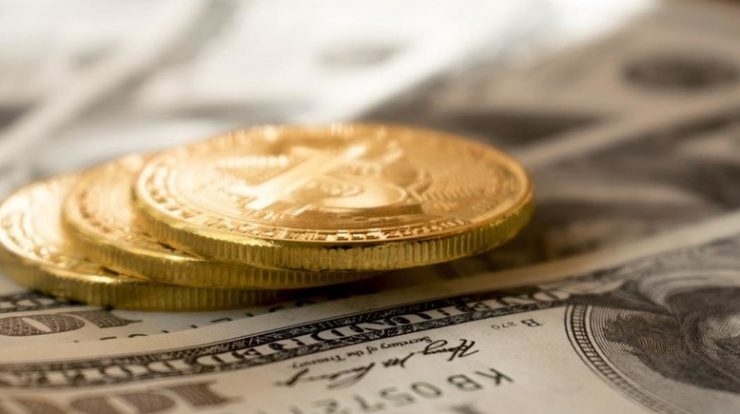The outbreak of the coronavirus quickly disrupted the structure of the world. And of course world finances. In order to combat the disease, citizens ‘freedom and companies’ business operations have been considerably restricted in some cases. The measures taken could now have far-reaching consequences for the economy.
• The economy in the Corona crisis is similar to war economies
• Parallels to other major crises in history such as the Spanish flu and the Great Depression in 1929 can be seen
• Exact consequences for the economy are still uncertain – however, there are some forecasts
An incumbent US president orders private companies to switch their production to other goods for the benefit of society and the state. What sounds like the armaments industry in World War II is now happening in the United States. Donald Trump wants to force the car manufacturer General Motors to produce 40,000 ventilators as part of the corona crisis. In a Twitter post, he also asked Ford to do this. Trump wants to enforce his ideas with the “Defense Production Act” – a law that was passed in 1950 for the Korean War. The US President thus treats the fight against the virus like a war. Indeed, certain parallels can be seen.

War economy in the corona crisis
The economy is almost completely at a standstill. A similar situation was probably only last during the world wars. In an interview with the international broadcaster “Deutsche Welle”, historian Albrecht Ritschl said that the current situation can best be compared to the war economy. There, too, restaurants, small shops and handicraft businesses were closed. The economic performance of the affected areas decreased considerably in some cases. According to the expert, reductions of up to 70 percent were observed. In his opinion, similar developments are still possible today. However, any comparison would be limp. The reason for the closures at the time was not the spread of a virus, but the release of resources. This is a big difference. However, the question still arises: could the corona virus have consequences like a war?
A look into the past
What is certain is that the corona virus is clearly not a war. People’s lives have changed significantly, but no enemies are bombing countries’ infrastructures and existing economic forces are not being used up for the production of misanthropic goods. To draw conclusions from history, we should therefore not think of war.
In order not to compare apples with pears, a look at an already survived pandemic is probably very appropriate. Measured against the dead, the Spanish flu was probably one of the worst ever. And it’s not that long ago. Between 1918 and 1920, the influenza virus killed at least 27 million people in three waves. Some estimates even assume 50 million deaths. The number of victims is so catastrophic because the health system was not nearly as good as it is today and the states had not taken any radical protective measures to contain the crisis. The current exit and contact restrictions are unique in their scope.
At the time of the Spanish flu, the economy was down due to the First World War. Berkeley professor Barry Eichengreen said in an interview with the magazine “Capital” that it was therefore inconceivable for the governments at the time to further cripple businesses and companies through health regulations. This in turn makes it difficult to draw real conclusions from the past. The economic consequences of the war and the pandemic are fluid. It is almost impossible to separate the two effects.
A study by economist and Harvard professor Robert J. Barro now wants to shed light on the situation. In collaboration with Jose F. Ursua and Joanna Weng, the researcher attempted to learn lessons from the Spanish flu for determining the health and economic consequences of the coronavirus. The team concluded that the flu-related economic impact led to a 6 percent decline in GDP in the countries concerned. Consumption fell by eight percent worldwide. They also found evidence that higher death rates also reduced stock returns. However, the economic consequences of the world war were much worse. This is why forecasts based on the war-like nature of the Corona crisis are likely to be significantly darker.
Everything is different this time
The classification of the corona virus in the historical context is therefore not easy. It is obviously not a war. The comparison with the Spanish flu leaves some questions unanswered. Although Robert J. Barro’s study clarifies how the flu died in the economy, the consequences of the major shutdown were not dealt with, as it simply did not exist at the time. Its effects remain largely uncertain. You could say that everything is different today – and this statement is also true in many respects.
Between February 19 and March 23, 2020, the US leading Dow Jones index lost almost 37 percent overall. This is a stock market crash that is second to none. In the financial crisis around 2007 and 2008, prices initially “only” fell 18 percent. After Black Monday in 1987, the losses from the “first panic” were a whopping 36 percent, and at the beginning of the Great Depression in 1929, it went down by 48 percent. Today’s crash is different from its predecessors. The special thing about it is that it was not triggered by the bursting of a speculative bubble and ran at an incredible speed. In addition, most past recessions have been caused by a negative demand shock. In an interview with “Capital”, Barry Eichengreen explained that the current company closings originally caused an offer shock. A lack of or lower wage payments and the fear of citizens could also result in a decline in consumption. This would put the real economy under pressure from both sides.
Rescue attempts are just as unique as the negative events. According to a report by the “ARD”, the monetary and fiscal policy measures taken go beyond “any historical model”. For example, the US Congress passed a $ 2 trillion stimulus package. During the financial crisis, the Obama administration released “only” around $ 800 billion in 2009. The Fed is also helping with its “Bazooka” and has announced unlimited bond purchases.
The look into the glass ball
The more time passes in the Corona crisis, the worse the forecasts become. In February, the International Monetary Fund (IMF) announced that global economic growth would probably decrease by around 0.1 percent due to the coronavirus. In mid-March, however, the president of the Kiel Institute for the World Economy, Gabriel Felbermayr, told the “Handelsblatt” that he feared the “mother of all recessions”. According to his calculations, halving economic output in Germany costs over four months four percent of annual economic growth. At two months, it would be eight percent. The President of the Ifo Institute, Clemens Fuest, apparently shares this opinion. In a press release, Fuest said: “If companies remain closed for a time longer than a month, the loss of production can quickly reach dimensions well beyond the growth slumps that have been known from previous recessions or natural disasters in the history of the European Union.” A study by the institute concludes that a two-month shutdown would reduce the annual growth rate of GDP by 7.2 to 11.2 percentage points. A three-month shutdown would result in a loss of 10.0 to 20.6 percentage points. So are we slipping straight to the next global economic crisis?
Unfortunately, no one is able to look into the future. Any forecast, however empirical it may be, remains more or less a glance into a crystal ball. The parallels to former economic crises are there, as are the differences. Today, new framework conditions apply so that past events cannot be projected into the present. A lot is different today that can be both good and bad. The Corona crisis will definitely have negative economic consequences. There is also the potential for a deeper disorder. Which development of the global community is imminent remains uncertain. Historian Albrecht Ritschl said in an interview with “Deutsche Welle” that even in the financial crisis in 2008, many economists unanimously predicted things that ultimately did not materialize. An article in “Zeit” concludes that “maybe the pandemic of a hundred years ago is more of a worst-case scenario than something that we will soon surpass in terms of economic disaster.”



